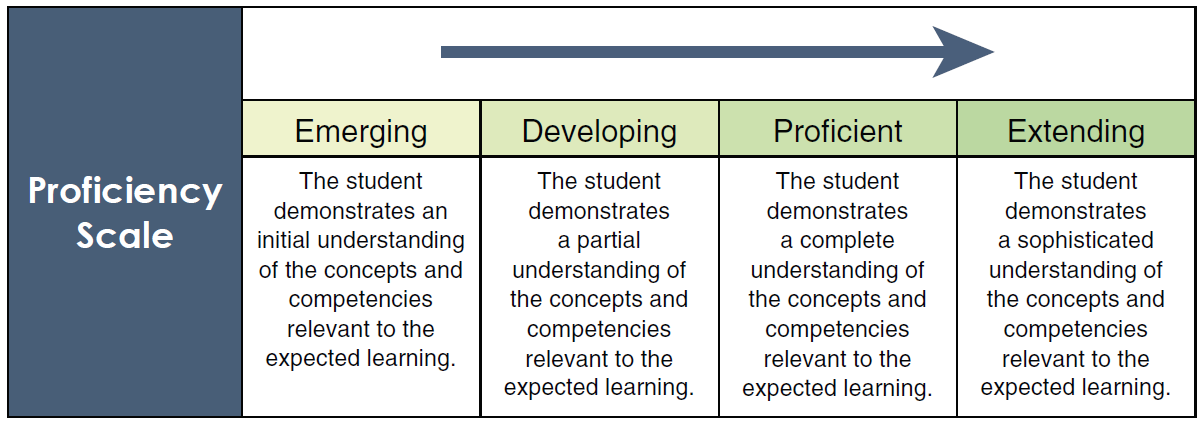Q. Why does the Ministry of Education have so many options for reporting student progress in Grades K-9?
- In 2016, when the new K-9 curriculum was mandated across the province, the Student Reporting Policy was updated to include a flexible option (Interim Option A: K-9). The traditional reporting policy also remained intact (Option B: K-12).
- Interim Option A has enabled districts to try innovative approaches to student progress reporting.
- In the 2018/19 school year, selected school districts will be implementing a new, draft Student Reporting Policy (a revised Option A). Feedback from the piloting districts will help inform revisions to provincial legislation and policy for K-9.
Q. What has changed with the draft reporting policy?
Informed by research on effective practices and by thorough engagement with parents and educators, the draft K-9 Student Reporting Policy features:
- more timely and flexible communication,
- strength-based, individualized feedback on student progress,
- standardized descriptive four-point provincial proficiency scale for K-9,
- student selected evidence-based reflection during the school year in addition to the end-of-year student self-assessment of Core Competencies.
Q. What is the value of the school district participating in this pilot project?
Participating in this pilot project provides students and parents in the district with an opportunity to share insights about the piloted practices. It also enables school districts to have a voice in the development of the final K-9 Student Reporting Policy, and provides educators with more time and opportunities to learn together about how best to support student learning by trialing draft policy and guidelines.
Q. Will the school district's participation in the pilot project affect or disrupt my child's learning?
School district participation in the pilot project is not intended to disrupt or negatively affect students' learning. The draft Student Reporting Policy supports student-centred assessment and reporting practices. Research has shown that when students are provided with opportunities to be engaged in the assessment process, they are better able to describe what and how they are learning, and they experience a greater sense of ownership of their learning.
Q. What is a point of progress?
Points of progress are the meaningful, varied, and responsive ways in which teachers provide parents with information about how their child is progressing in their learning and what the child can do to extend their understanding. Points of progress may take many forms, including but not limited to digital portfolio posts, conferences, phone calls, written comments, and student goal setting and reflections on learning.
Q. What is a summary of progress?
A summary of progress is an end-of-year written report of student progress (digital or paper) in relation to the learning standards in all areas of learning. Parents receive it at the end of the year or when a student changes schools or districts.
Q. Will students be responsible for assessing themselves?
Students will be more involved in the assessment process – from co-creating criteria for learning to reflecting on their learning or engaging in self-assessment. However, teachers continue to organize learning, provide descriptive feedback, and evaluate student progress.
Q. How will we know if our child is making progress as a learner?
Teachers and students will provide evidence of student learning, along with descriptive feedback and/or proficiency scale descriptions.
Q. What is the provincial proficiency scale?
The four-point provincial proficiency scale will be used to communicate student progress in all areas of learning. It describes levels of proficiency in relation to the learning standards of the provincial curricula.
Q. How often and in what form will I receive information about my child's progress?
Parents will receive information about their child's learning in at least four points of progress during the school year and one summary of progress at the end of the year. Early in the school year, piloting school districts and schools will provide parents with information on how and when the four points of progress will be communicated.
Q. What is strength-based feedback?
A strength-based approach recognizes that student learning is dynamic and holistic, and that students demonstrate their learning in different ways and rates. Feedback is focused on what the student can do and what they are working toward.
Q. What is a learning standard?
In the context of B.C.'s new curriculum, learning standards refer to the curricular competencies and content in all areas of learning. Communication with parents should focus on student progress in relation to the learning standards.
Q. What is an area of learning?
Areas of learning are the subjects that make up the provincially mandated curriculum. Teachers are responsible for communicating student progress in all areas of learning listed in the Required Areas of Study Order.
Q. How are the points of progress to be documented?
While the provincial policy requires that two points of progress be documented in writing, the school district, or authority will determine the method for documentation (i.e. paper or digital form).
Q. In piloting schools, is the proficiency scale to be used to report progress in all areas of learning?
Yes, student progress in each area of learning must be communicated using the four-point provincial profiency scale at least one time during the school year or semester (in a point of progress), and a final proficiency level for each area of learning must be communicated at the end of the school year or semester (in the summary of progress).